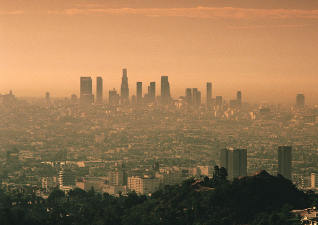River subbasins more depleted than
official figures show
09 April 2024
Published online 16 September 2015
Outdoor air pollution could be causing over three million deaths per year, predominantly in infants and adults over thirty.

© PhotoDisc/Getty Images
The team combined the results from a global atmospheric chemistry model, population data and health statistical data. They attribute the deaths to seven main culprits, at the top of which is PM2.5 — fine particulate matter less than 2.5 micrometres in diameter and with the ability to penetrate deep into the lungs, leading to cancers and respiratory diseases.
Jos Lelieveld and colleagues, including a King Saud University scientist, found that death rates from PM2.5 vary across countries, by rate of exposure to the pollutant.
The particulates are released with residential energy emissions as a result of poor technology heating and outdoor cooking, and are most prevalent in India and China.
The next killer in line turned out to be agriculture-related. Release of ammonia from livestock and fertilizers lead to the formation of lethal ammonium nitrate and sulfate particles in the atmosphere. The USA is hit the worst by this form of farming-related pollution.
The victims are usually children, below five years of age, in developing countries. In the West, the deaths mostly occur in people over 30, usually due to strokes or heart attacks.
The primary pollutant in Middle Eastern countries, however, is natural particles like dust from desert storms. In Egypt, 98% of mortality linked to air pollution is a result of dust, says Lelieveld.
Of those under scrutiny in this study, Egypt is the highest country with air-pollution-related deaths in the region at 35,322 deaths per year. Second in line is Sudan with 24,255 deaths. Iraq and Saudi Arabia lose 20,335 and 14,600 people respectively as a result of air pollutants.
In this region, even though PM2.5 particles exist, their total amount is “swamped by the amount of desert dust,” says Lelieveld. “Some of the dust is not natural of course, and there are a lot of questions about its level of toxicity."
Lelieveld explains that scientists have yet to know how dust particles interact with the already existent air pollution to compound the problem.
One of the challenges researchers on atmospheric pollution face in the region, he says, is access to information. There aren't enough measurement stations, but even in a country like Saudi Arabia with a measurement station, "data is not being given upon request," says Lelieveld.
He expects that, globally, about one million lives could be saved every year if exposure to these types of pollution can be reduced.
doi:10.1038/nmiddleeast.2015.169
Lelieveld, J. et al. The contribution of outdoor air pollution sources to premature mortality on a global scale. Nature http://dx.doi.org/10.1038/nature15371 (2015).
Stay connected: